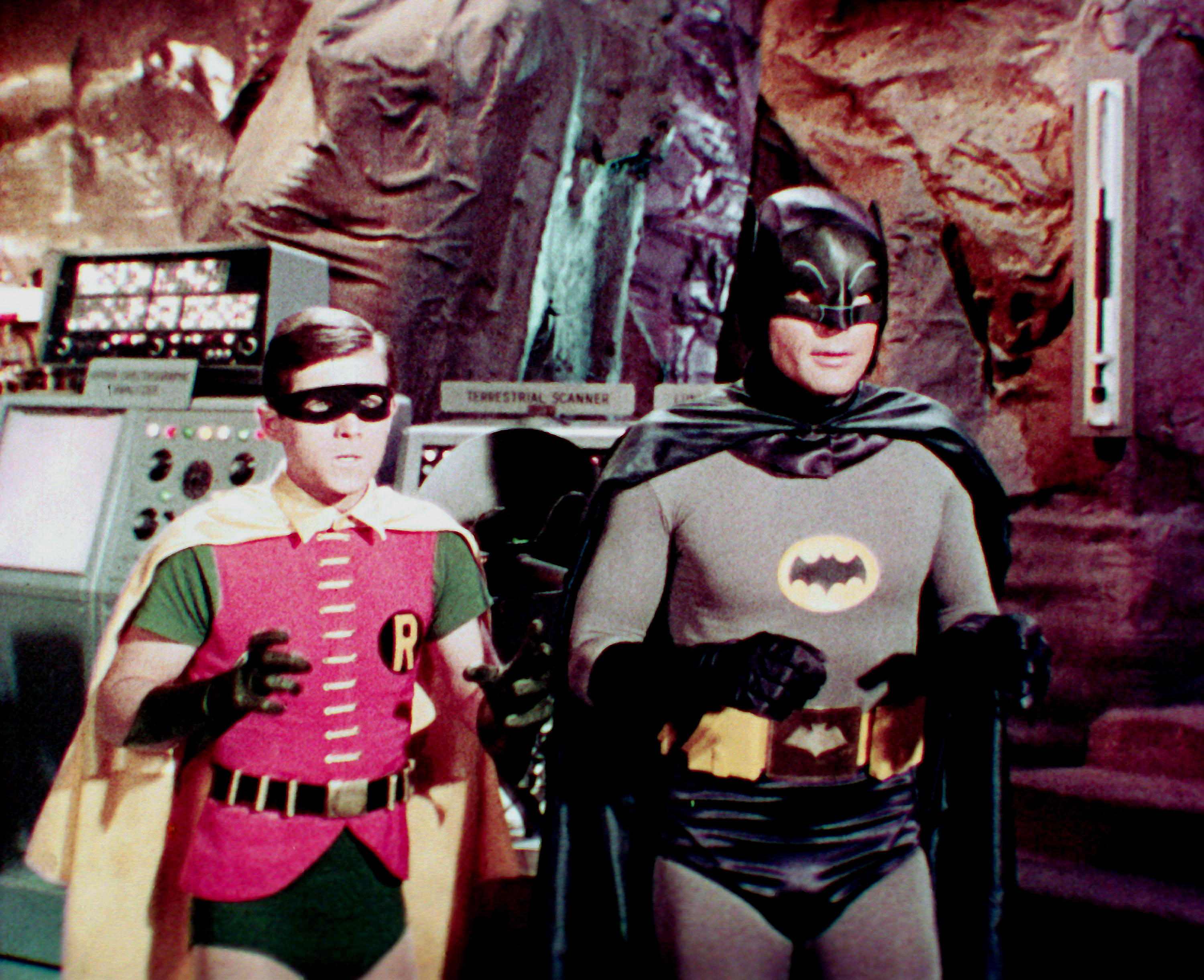Why this ridiculous 1966 Batman movie is the most important Batman movie ever
How Adam West's camp classic saved the Caped Crusader


In his infamous 1954 screed Seduction of the Innocent, Fredric Wertham, diabolical doctor of moral righteousness, wrote about the evils of comic books. (He was thinking about the children, allegedly.) His study, since disproven as manipulative and deeply flawed, scared protective parents and tainted comic books for decades. The superheroes to whom Wertham dedicates the largest section of his diatribe are Batman and Robin, who, the doctor attests, are actually a gay couple; he cites as evidence the fact that they have a butler (a butler!) and a fondness for flowers (flowers!).
Over the next 10 years, in no small part because of Wertham's accusations, Batman went through a lot of changes.
You may look back affectionately on Batman's innocently zany antics of the 1950s and early '60s. But Batman was almost ruined by those robots and radioactive big bugs and kitschy toys and gimmicks and the definitely not-gay Bat-Family of Bat-Hound, Bat-Girl, Batwoman, Bat-Mite, and Mogo the Bat-Ape. Sales sunk. In fact, "they were planning to kill Batman off altogether" in 1964, said co-creator Bob Kane.
The Week
Escape your echo chamber. Get the facts behind the news, plus analysis from multiple perspectives.

Sign up for The Week's Free Newsletters
From our morning news briefing to a weekly Good News Newsletter, get the best of The Week delivered directly to your inbox.
From our morning news briefing to a weekly Good News Newsletter, get the best of The Week delivered directly to your inbox.
But then editor Julius Schwartz took over, and tried to save the comic by eradicating the Bat-Family. He was aided by artist Carmine Infantino, who redesigned Batman to be "more realistic." Sales went up. But ironically, it was another gimmick-laden endeavor that truly rescued the Dynamic Duo: the Adam West-starring camp comedy Batman, which premiered in 1966, the year Kane retired.
Batman fans, particularly Frank Miller acolytes, like to say West's show and movie "ruined" Batman. Actually, the parodic depiction made Batman a cultural icon after a decade of mail-in toys and cynical strategies. It presented a starkly different kind of Batman, at once refuting Wertham's provocations while slyly embracing them through its ostensible innocence.
A genuine fad, the show and movie came and went in 26 months. But its influence altered the legacy of the Caped Crusader. The movie, which came out July 30, 1966, was the first official Batman movie since the serials of the 1940s. A generation of television viewers and moviegoers, unfamiliar with Kane and Bill Finger's brooding detective (Batman killed people — by noose, by gun, by defenestration) now knew Batman only as a campy crusader with painted-on eyebrows and a syncopated delivery that sounds, to modern ears, like a lascivious cross between William Shatner and Jeff Goldblum. The juxtaposition between Walter Cronkite's 1968 Vietnam expose on the dinnertime news and Burt Ward yawping, "Holy Diversionary Tactics!" must have been dizzying.
The movie opens with thanks to the "funlovers" of the world before going into a silent comedic credits sequence. Batman is replete with loquacious numbskulls who rely on flowchart logic and use words like "skullduggery" in casual conversation. Written by series writer Lorenzo Semple, Jr. and directed by Leslie H. Martinson, it was the first theatrical Batman movie, and remains, by far, the most verbose, as well as the most intentionally prudish. Ironic eroticism replaces any possible sensuality — when Batman kisses Catwoman (she's disguised as a sexy Russian reporter), it's the worst on-screen kissing imaginable, all puckered lips pressed together like planks of wood. Robin, watching from a secret monitor, gets fiercely repulsed and turns it off, deriding it as indecent. Wertham might say Robin is jealous; others might say he's a sexually repressed victim of the post-Wertham world.
A free daily email with the biggest news stories of the day – and the best features from TheWeek.com
By the second season of the show, viewership waned; by the third, when the twice-weekly episodes were halved, effectively ending the "Same Bat-Time, Same Bat-Channel" cliffhanger endings that made the first season so popular, the show was kaput. The movie would be the last Batman film until Tim Burton's 1989 blockbuster. But the camp incarnation's short-lived success altered the way writers and artists approached Batman. It inspired more "serious" niche story arcs from writers intent on rectifying the naive view of comics the show had left in mainstream minds. In the final issue of 1969, Robin, who had outworn his welcome to many fans, was shipped off to college, leaving Batman alone to prowl nighttime skylines and sordid back alleys.
In the early 1970s, the combined efforts of writer Neal Adams and artist Dennis O'Neil turned Batman into The Dark Knight, so to speak. They only worked together on a handful of issues, but their macabre mysteries, mostly devoid of conscious cultural discourse ("it just pure storytelling," O'Neil later said, "just melodrama, and it didn't have any pretenses to be anything else") set the stage for the grim, growling Batman that has dominated culture for the last 10 years. The pop-art of the show, all those vibrant Warhol and Lichtenstein colors and crooked camera angles and lunchbox-ready catchphrases, was jettisoned for cinematic artwork and nightmarish villains like Man-Bat and a reimagined Two-Face, who hadn't appeared in an issue since the '50s.
But it was the '60s show and movie that made Batman a ubiquitous pop-culture presence, when he was, just two years earlier, on the cusp of extinction. Had the show not rejuvenated interest in Batman, it's doubtful DC would have put in the effort and money to revive Detective Comics and make Batman serious again. If you're going to insist that the show "ruined" Batman, you have to concede that it inadvertently saved him, too. Consider Adam West a meta anti-hero, the Jean-Paul Valley of the 1960s.
Greg Cwik is a writer and editor. His work appears at Vulture, Playboy, Entertainment Weekly, The Believer, The AV Club, and other good places.



